
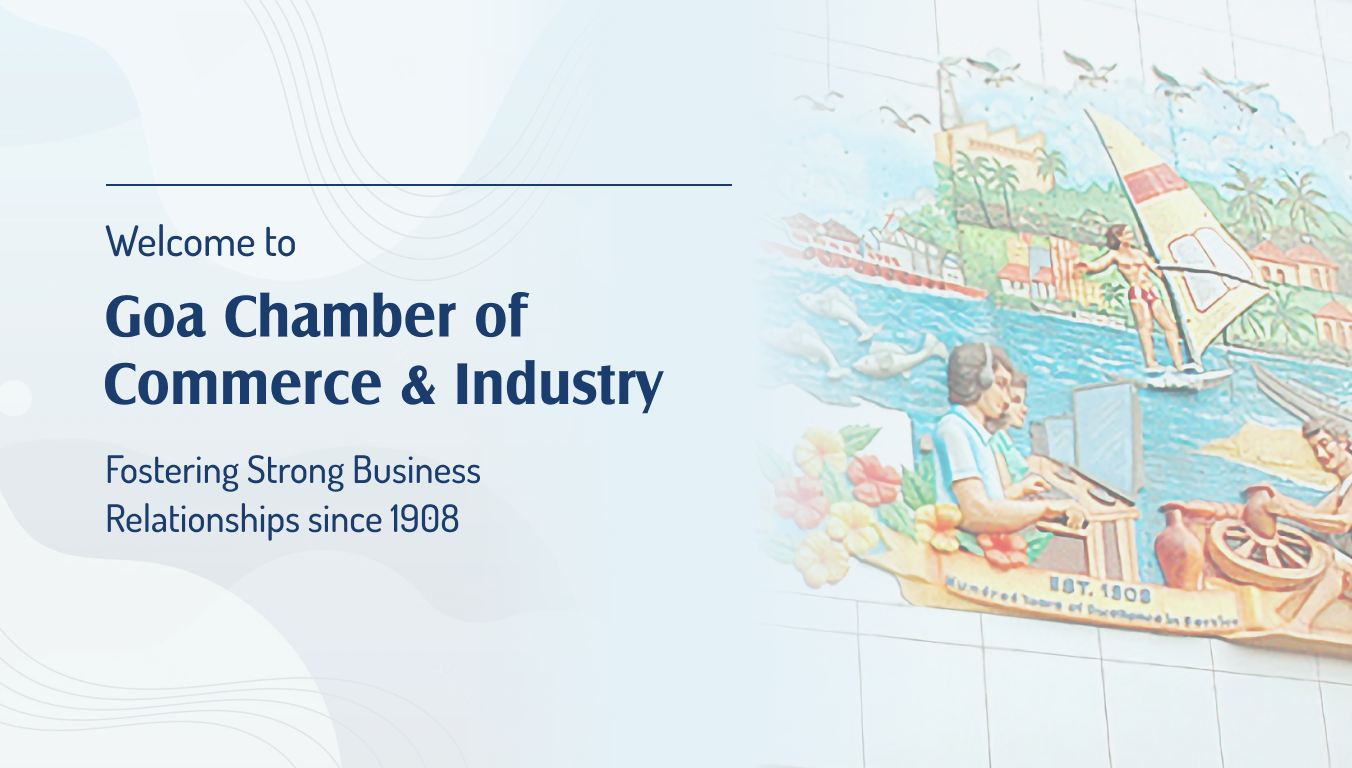


GCCI BULLETIN FEBRUARY 2022
Dear Members,
The unveiling of the Union Budget is an annual ritual at GCCI. The Managing Committee members, GCCI Committee Chairpersons, and also Heads of major industry bodies witness this live relay together at the Chamber.
I must commend the Union Budget 2022 presented by the Hon’ble Finance Minister, Smt Nirmala Sitharaman. It is growth-oriented with an impetus on capital expenditure to fuel economic growth and employment generation. The FM must also be commended for maintaining the fiscal deficit at 6.9% of GDP in FY22. The hospitality sector is yet to regain its pre-pandemic level of business and the extension of the ECLGS scheme is a welcome move.
Ralph de Sousa
(Chairman)
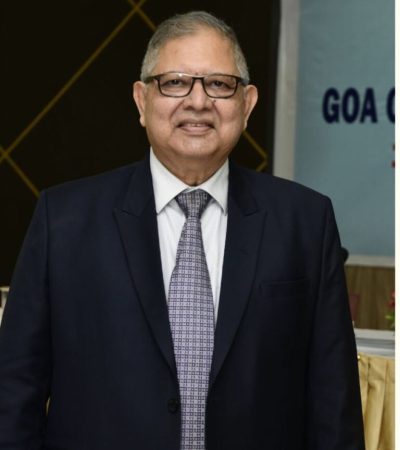

PRESIDENT SPEAKS
Goa covers an area of 3,702 sqm2 on the west coast of India and comprises two major districts – North Goa and South Goa. It is the 25th State in the Union of States of India. It was liberated from Portuguese rule in 1961. It was part of Union territory of Goa, Daman & Diu till 30 May 1987 when it was formed into a separate State.
Updates to various Acts, Rules & Regulations, Notifications, Infrastructure, Economic Survey, Policies & Schemes and other important financial documents put out by the Goa Government will be filed in this section from time to time as they become available.
This section will provide updates on the various central government acts, rules, notifications, union budget text including (audio/video) and other pertinent documents. An excellent starting point is the Government of India directory (GOI) which provides links to various Government of India websites of interest.


Despite centuries of alien occupation, Goa’s cultural traditions have displayed amazing resilience. The Portuguese influence and local strains have created a cultural mix that is different from the rest of India.
Goan folk music and dances have a lively rhythm. The musical accompaniment for both folk songs and the folk dances is provided by a diversity of musical instruments like ghumot, dhol, cymbal, flute, harmonium, violin, mandolin, guitar, sitar and may others. Music has the focus at all major social events – fairs, feasts, dances, and marriages.
Music and dance form the very fiber of rural Goa. Traditional dances like Dhalo, Kinbi, Dekhni, Fugdi, Coridinho, Mando, Ghodemodni, Dhangar, Lampdance, and many others display the vibrant and lively culture of Goa.
Performing art forms like Zagor, Khell. Tiatr, Dashavatari kalo, Veerbhadra, and Mussallam Khel also show the diversity of the cultural influences which makes Goan culture so distinctive and unique.
Overall Goans are hospitable people with the majority of the local population speaking English, guests/visitors to this beautiful state will certainly feel at home.
ABOUT GGCI

Goa Chamber of Commerce & Industry (GCCI) is Goa’s premier non-profit business, support-services and networking organization. We represent and liaise with SME’s, Corporate Organisations and Government bodies.
CONTACT US
GOA CHAMBER OF COMMERCE & INDUSTRY
Narayan Rajaram Bandekar Bhavan, T.B. Cunha Road, Panaji, Goa
BRIEF HISTORY OF GOA
Goa – The Name – In the later Vedic period (c.1000-500 BC) when the Hindu epic “Mahabharata” was written, Goa has been referred to with the Sanskrit name “Gomantak”, a word with many meanings , signifying mostly a fertile land; but however, it is the Portuguese who gave Goa its name. Before they arrived on the scene, Goa, or Gove or Gowapura, was the name only of the port town near the mouth of the Mandovi River. This was also the same site on which the Portuguese later built their capital, today’s Old Goa.
Mythology and Legend – Legend ( and history to some extent) has it that a section of Saraswat Brahmins, (one of the sub-sects of Brahmins who eat fish) became the first wave of Brahmins to settle in Goa. This group of Brahmins were called Saraswats because of their origins from the banks of the River Saraswati, an ancient river that existed in Vedic times. The river Saraswati subsequently dried up and caused large scale migration of this group of Brahmins to all corners of India. A group of ninety-six families, known today as Gaud Saraswats, settled along the Konkan coast in and around today’s Goa somewhere around 1000 BC. They reportedly took the sea route and did not use land routes. These groups settled in Tiswadi, Salcete, Bardesh, Pernem and Kudal. The first group of Saraswat Brahmins who settled in the Goa area were called “Sastikars” because they settled in the eight villages of Sasti taluka. Today’s Salcete taluka derives its name from the Sanskrit word “Sassast” meaning the number 66, Tiswadi derived from the Sanskrit word for the number 30, and Bardesh/Bardez derived from the Sanskrit word for the number 12. Their settlements called as agraharas set the pace for agriculture and development in the area in partnership with the local indigenous people, the Kumbhis. The earliest “Matha” of the Saraswat community was the “Kavle Math” founded in 740 AD and established at Kushasthali near Keloshi in Goa. This Math was subsequently destroyed by the Portuguese in 1564 but the tradition continued on elsewhere.
This early land reclamation by the Saraswats also provides the basis of a very popular theory of origin of Goa, with its basis as recorded in the “Skanda Purana”. It is said that Lord Vishnu, in his sixth incarnation as “Lord Parashurama” shot an arrow from the top of the western ghats into the sea. He then commanded the sea or “Lord Samudra” to withdraw where the arrow fell and claimed that land to be his kingdom, that exact spot is reportedly “Benali” (in Sanskrit for ‘where the arrow landed’), or today’s Benaulim, the land around it , today’s Goa. He is also said to have brought the Brahmins from Trihotra in north India and settled them in Goa. This is considered today to be more mythology than history.
The Early era – Goa was a part of the Mauryan empire of Emperor Ashoka. It has been known to other cultures by different names. Some of the names it was known by in the ancient world are Indian Aparant, Gomant, Govarashtra, Goparastra, Govapuri, Gopakpuri, Gopakapattana, Gove. The last four being the names of its capital. Greek Chersonesus or Nelikinda (Periplus), Nekanidon (Pliny), Melinda or Tricadiba Insula (Ptolemy), Nincilda (Peutingerian tables), Sibo. Arabic Sindabur, Chintabur, Cintabor.
The Hindu era – The Hindu dynasties controlled Goa for the next 700 years. The various dynasties that controlled Goa during this period are, the Scytho-parthians (2nd -4th century AD), the Abhiras, Batpura, and the Bhojas ( 4th – 6th century AD), the Chalukyas ( from 6th – 8th century AD) and the Rashtrakutas of Malkhed (8th to 10th Century AD). This was followed by the Kadambas (1006 AD-1356 AD).
The Kadambas were unique because they were a local dynasty that slowly came to dominate the scene by forging alliances with their neighbors and overlords, the Chalukyas. They made Chandrapur (Chandor) their capital (937 AD to 1310 AD). They subsequently moved their capital to Govapuri on the banks of the Zuari river, the site of today’s Goa Velha. The Kadambas are credited with constructing the first settlement on the site of Old Goa in the middle of the 11th century, when it was called Thorlem Gorem. The period of the Kadambas is considered to be the first golden age of Goa. The death of the last Chalukya king in 1198 weakened their alliance and this exposed Goa to the vulnerability to Muslim invasions that took place continuously after that.
The Muslim era – The invasion of Goa by the Bahamini Kingdom in 1350 brought about complete destruction to Goa, its temples and its institutions. The invaders, driven by fanatic zeal destroyed temples, murdered priests and systematically looted their wealth. Many deities got moved to safer areas, only one survives to this very day- the Shree Mahadev Temple at Tambdi Surla. The end of the first period of the Bahamini rule was following their defeat by the the Hindu Empire of Vijayanagar (14-15th century AD). The Bahaminis returned again in 1470 and won and with that victory, Goa became a part of the Muslim Bahmani Kingdom of the Deccan (15th century). The Bahaminis created a new city to facilitate trade on the northern banks of the river Mandovi, a city they called Ela. In 1492, the Bahmani Kingdom split into five kingdoms, namely Bidar, Berar, Ahmadnagar, Golconda and Bijapur. One of the kingdoms namely Bijapur (which was the capital of the territory) included Goa and was ruled by Sultan Yusuf Adil Shah Khan.
The Early Portuguese era – The Portuguese explorer Vasco da Gama landed in Calicut, in present day Kerala in 1498. This discovery and the establishment of a new sea route to India around the Cape of Good Hope gave an impetus to to the Portuguese who wanted very much to exploit it to their advantage and profit from it. They soon realized that they had to have a permanent trading post established to effectively do so. Repeated attempts to do just that along the malabar coast ( controlled by the Zamorin of Calicut) of India proved difficult and finally they decided to try their luck northwards along the coast.
In 1510 under the command of Alfonso de Albuquerque they laid siege upon Goa, then under Sultan Adil Shah of Bijapur. On February 17th he entered the city of Goa for the first time and met little resistance as the Sultan was engaged with his forces elsewhere. Sultan Adil Shah soon came after him with a vengeance and and on May 23rd 1510 Alfonso de Albuquerque had to flee the city of Goa. Determined to win it for good, Alfonso de Albuquerque made another attempt a few months later with the help of a Hindu Chieftain called Timoja . This time his timing could not have been more than perfect. Sultan Adil Shah had just died and the heir to the throne was the infant Ismail Adil Shah. Ela or the city of Goa was under Rasul Khan, one of his generals. After an initial attack on the Arsenal and a quick and bloody battle, Alfonso de Albuquerque victoriously entered the city of Ela, Goa on St. Catherine’s Day, November 25th 1510 .
As revenge for his earlier defeat, he massacred and decimated all of the city’s Muslim population over the next three days. He however spared the Hindu population and appointed Timoja as his Thanedar. By 1543, the Portuguese were able to extend their control over Salcette, Mormugao and Bardez, thus ending their first phase of expansion into Goa. The territories of Ilhas, Salcette, Mormugao and Bardez formed part of the Portugal’s “Velhas Conquestas” or Old Conquests, and formed only one fifth of the total area of modern Goa. By this time, Goa became the jewel of Portugal’s eastern empire.
Golden Goa – By the end of the 16th century, Goa had already reached its peak and was referred to as “Golden Goa” or “Lisbon of the East”. With the Portuguese, came their religion. Albuquerque’s interests initially was only commerce as a result, the Portuguese were quite tolerant of the Hindus though the same was not with the Muslims. From 1540 onwards, with the arrival of the dreaded “Inquisition” in Goa, Portugal’s liberal policy towards the Hindus was reversed. 1542 saw the arrival of St. Francis Xavier and the Jesuits to Goa. The saint left a lasting impression on Goa and is regarded today as Goencho Saib or the Patron Saint of Goa. For more on the Saint click on Goencho Saib.
The decline of Golden Goa – By the mid 17th century, Goa’s decline as a commercial port began to mirror the decline of Portuguese power in the East as a result of several military losses to the Dutch and the British. The Dutch had taken control over the spice trade – the original reason for Portugal’s eastern expansion. Brazil had now supplanted Goa as the economic center of Portugal’s overseas empire.
The war with the Marathas and the New Conquests – The first attack was by Sambhaji, son of Shivaji’ defeat was narrowly averted by the appearance of their rivals, the Mughals on the scene. The second attack in 1737 was led by King Shahu, grandson of Shivaji and this ended in a truce. The treaty of may 1739 gave control of Portugal’s northern Indian provinces including Bassein to the Marathas in return for the withdrawal of Maratha forces from Goa. In 1741, the Marathas invaded Bardez and Salcete and threatened the city of Goa itself. Fortunately for the Portuguese, a new viceroy, the Marquis of Lourical arrived with substantial reinforcements and defeated the Marathas in Bardez. During this period, the Portuguese slowly expanded their territories which enabled them to extend their control over Bicholim and Satari (in 1780-1781), then Pernem later that decade and finally Ponda, Sanguem, Quepem and Canacona in 1791. These acquisitions known as the” Novas Conquestas ” were quickly integrated with the Velhas Conquestas consisting of Salcette, Bardez and Tiswadi. This second and final phase of Portuguese expansion was rather different from their initial conquests. By the time these territories were added, their attitude had changed and their zeal for religious conversions had died down. In a strange quirk of fate they banned the order of Jesuits in 1759, because they believed them to be puppets of the pope in Rome. By 1835, all religious orders were banned, and the Hindu majority were granted the freedom to practice their religion. As a result, the “New Conquests” retained their Hindu identity, a characteristic feature that persists even today, and this is also why there is a religious/cultural/language or dialect difference existing in Goa between the Talukas of Tiswadi, Bardez, Salcette and Mormugao on one side and Pernem, Bicholim, Sattari, Ponda, Sangem, Quepem and Canacona on other.
The language – Sanskrit was used as the official in Goa and throughout Konkan for many centuries. Konkani evolved much later. Until recently, it was believed that there was hardly any evidence of Konkani literature before the arrival of the Christian missionaries. This has since been disputed. Fr. Thomas Stephens an Englishman and one of the early missionary Jesuit scholars is credited with writing the first book in Konkani. His magnum opus being the “Krista Purana ” or “The story of Christ”, written in the style of Hindu Folklore. He subsequently also produced his other classic “Doutrina Cristao”, a compendium of Christian doctrines in Konkani. The late Dr. Pissurlencar and others, believe that the Konkani works he had discovered at Braga, were translations from Marathi for the use of the Christian missionaries only. The missionaries studied both Marathi and Konkani texts and therefore did not probably need the Konkani translations of the same books. Hence his and some other’s conclusion was that they were meant for the use of the common people who could not read them in the original. There is also evidence that the clergy promoted Portuguese, made a strong attempt in the seventeenth century to destroy konkani as they thought that it would help convert more to Christianity. In spite of all this until 1961 only 5% spoke Portuguese, mostly in administration and in the commercial sector. It was only after liberation and statehood did the dream of Konkani as the state language saw realization.
Christianity in Portuguese Goa – The Portuguese introduced Christianity to Goa. One of Vasco da Gama’s goals in finding the sea route to India was to find new Christians. Upon landing at Calicut in 1498 he was surprised to find a thriving Christian community established by one of the Last Apostles of Jesus, St. Thomas. This however did not stop the Portuguese from promoting their own brand of European Christianity- Roman Catholicism.
The first missionaries sent to India after the discovery of the sea route were some Dominican Friars who came as chaplains of the Fleet on Albuquerque’s ships. Soon a church dedicated to St. Catherine was set up after the conquest. The significance being the victorious conquest of Goa on St. Catherine’s day, November 25th 1510.
The next group that was more successful in propagating Christianity was the Franciscans, who arrived in Goa in 1517. For the next quarter century they were active in conversions not only in Goa but also the bordering areas of India. Upon hearing of this success, Pope Paul II subsequently raised the status of Goa to an Episcopal. He appointed the First Bishop to take charge who unfortunately never made it to India as he died soon after appointment. The Pope then appointed the Episcopal authority to Dom Fr. Joao da Albuquerque, who took charge of the diocese in 1538.
The most successful group to arrive soon after were the Jesuits of the newly formed Society of Jesus. With the arrival of St. Francis Xavier S.J., one of its founders, the activity of the Jesuits went into overdrive. Goa became the base for Fr. Francis Xavier’s voyages to the east. His preaching of the gospel took him to Macao, Japan, Philippines and at the doors of China. His untimely death on the desolate island of Sancian in the South China Sea put an end to his career but not his legend. The saga of the incorruptibility of his body eventually led to his canonization and sainthood in 1622 and his relics preserved for posterity at the Basilica of Bom Jesus, Old Goa.
The other Missionary and religious orders that settled in Goa include the Dominicans in 1572, The Theatines in 1640, Order of St. John in 1681 and the Carmelites in the 1700’s. The only nunnery in Goa was the Monastery of St. Monica, established in 1606.
The era of religious repression – Alfonso de Albuquerque had not interfered with Hindu religious practices apart from forbidding the practice of Sati. He also did not destroy any temples during his reign. From 1540 onwards , under the influence of the counter reformation in Europe and with the arrival of the Inquisition to Goa, this liberal policy was reversed. A strict censorship of literature was soon imposed. New laws forbade the public profession of any other religion except the Catholic religion. Even the Syrian Christians who had been in India before the Portuguese were treated as heretics along with the Jews and Protestants. Hindus also came to be affected and they were accused of being disrespectful to Christianity. An edict by the Viceroy in 1576 required the destruction of all Hindu temples in Portuguese controlled Goa along with banning of ritual ablutions and the expulsions of non Christian priests, holy men and preachers. Hindus were forbidden to visit Temples in adjoining areas not controlled by the Portuguese and were compelled in some cases to attend Churches and listen to the Gospel. Social intercourse between Christians and non Christians was discouraged. Christian converts were favored in the appointments of Goans to public office and some positions were even reserved for these new converts.
The law on paper still laid down that the “Conversion to Christianity of people from other religions had to be by persuasion and not by force”. This however was not practiced in reality. An exception to this law was made in 1559 when a decree ordered Hindu orphan children to be handed over to the College of Sao Paolo so that they could be baptized and educated as Christians by the College.
The converts usually took on the name of the priest or the College who or where they were baptized. After conversion, they were expected to make a clean break from their Hindu past. Not only were their names changed but also their food habits, social customs and even dress had to conform to the way of living of the European Christians. Several old Hindu practices were enhanced in their christianized versions. The place of honor given to the family deity was now given to the Oratorio. The flame burned before a crucifix and various Christian saints . The Tulsi plant in front of the house gave way to the Cross in front of Christian homes and Christian prayers now accompanied pre marriage ceremonies. In the village , the Novem ( harvest procession) was headed by a Christian priest instead of a Hindu one and he also performed the traditional blessing of the first sheaves of Paddy.
The Portuguese also implemented the compulsory learning of the Portuguese Language under the Viceroy, Count of Alvor ( 1681-1686). He compelled Goans to give up Konkani and this caused a significant number of people to flee Goa to neighboring India. The result of all these actions was that in 1707, there were 100,000 Christians to 3000 Hindus in Salcette and a similar ratio in other areas of the Old Conquests.
This repressive policy of the Portuguese continued until the mid 1700’s and underwent a complete U turn due to one individual-The Marquis of Pombal.
Pombal and the Jesuit expulsion – Sebastian Jose de Carvalho, later to be the Marquis of Pombal was the Prime Minister to the King of Portugal, Dom Joseph I. He was appointed in 1750 and was propelled to power by the Lisbon earthquake of 1755. He successfully masterminded the rebuilding of Lisbon and this made him very powerful and influential in the eyes of the King and the court. The assassination attempt on the King on September 8th 1758 gave him an opportunity to purge his enemies and did so with a vengeance. These included the ex-Duke Alvario, the Marcioness of Tavora and her husband and two sons and the Jesuit fathers. All the conspirators were executed. In 1761, Pombal issued an edict confiscating all Jesuit property to the crown and arrested and imprisoned all the Jesuits. A total of 53 Jesuit priests were executed as co-conspirators in the assassination plot. The Jesuit leader, Fr. Malagrida was hanged and others burned at the stake. All of the remaining Jesuits were expelled from Portugal.
The fallout of the Jesuit expulsion had its immediate ramifications on all aspects of life in Goa. The most important effect was felt on education. Replacing Jesuit teachers and professors was an arduous task. The greatest impact was however felt on the commercial front. The Jesuits had invested vast amount of their resources in every sphere of commercial activity in Portuguese Asia and were involved in shipping, building, trade and finance. They were the custodians of the crown funds, managers of Goa’s Royal Hospital and responsible for the upkeep of the fortifications and minting of coins at some places. They also owned large tracts of land all over. The most important other decision of Pombal that had far reaching effects and was welcomed by all was the suppression of the Inquisition in 1774.
Pombal’s Legacy – It appears that Goa was Pombal’s greatest beneficiary. Though the expulsion of the Jesuits was controversial, the suppression of the Inquisition was welcomed by all. There was however more. For more than half a century before his coming to power, local Goan priests were used by the clergy to do the low rung work. They were never promoted or appointed to higher positions. The Cathedral chapter, the Vicarships and the professorships in Goa were all filled by Europeans only. Pombal’s historic decrees of 1761 and 1763 among others, called for opening up the the Clergy and various religious orders for all subjects irrespective of their being white or native in origin. As a result of this, the first Goan was appointed to the Cathedral chapter in 1762. Soon the Vicarships went to eligible locals. The Religious orders who had earlier refused to admit natives in their ranks a few years ago began accepting Goans. The local Theatines were the first to do so and soon all other religious orders followed suit.
The period from 1820s to 1920s are regarded as one of the best times for Goans with regards to religious and political freedom. Portugal was a monarchy until 1910 and was replaced by democracy and was declared a republic. Goans were given representation in the Portuguese parliament. All citizens, be they Hindus, Christians etc were guaranteed individual freedom and liberty under the civil code. All this changed in 1928 with the dictatorship under Dr. Antonio Salazar. His ‘Acta Colonial” denied everything promised previously and Goans were back to square one.
Prelude to liberation-The early years – From the very beginning, since the conquest by Albuquerque in 1510, there were many unsuccessful attempts to overthrow the Portuguese. The earliest revolt took place in 1550 when the people of Assolna, Velim, Cuncolim, Ambelim and Veroda launched an attack on the colonialists but they failed in their attempt. Their properties were confiscated.Their leaders were arrested and executed.
Then came the well known and well organized plot, called the “Pinto Revolt” in 1787. The leaders of the plot were some prominent priests of Goa belonging to the “Pinto Family” who had the support of some military officers of Goan origin. A large number of arrests were made and criminal proceedings launched against its leaders. 47 members of the group were arrested and prosecuted as plotters including 17 priests.
On 14th January 1835, a Goan, Bernardo Peres de Silva, was appointed Perfect with the powers of Governor of Goa by the government of Queen Maria II of Portugal. He was born not far away from Old Goa and received his education at the Rachol seminary, the Goa Medical School and then Portugal. There he became politically active as a liberal and this eventually led to his appointment to Goa as the “Perfect or Governor”, the first and the last native Goan to be so appointed. His appointment was not liked by his counter factions at Lisbon and he was compelled to relinquish his post soon after his arrival at Goa. After being in office for only 17 days, he was arrested by the military on February 1st 1835.
A new Governor, the previous Viceroy Manuel de Portugal e Castro was appointed in his place. Bernardo Peres de Silva was deported to Bombay and the army took control of Goa during the interim period. In the counter-revolution that followed, a faction of the army loyal to him took control of Terekhol fort and invited him back .This eventually resulted in a showdown at Terekhol fort where his supporters lost in spite of British support. His supporters and troops loyal to him were massacred and he subsequently took refuge in India and never returned back to Goa.
Bernardo Peres de Silva – The Ranes of Goa based in Sattari and Sanquelim have been well known for their attempts to dislodge the Portuguese from Goa. In all there were reportedly about fourteen rebellions out of which the most successful one was organized by Dipaji Rane in 1852. He carried on the fight against the Portuguese for three and half years and eventually the Portuguese government made peace with him. The Portuguese agreed to extend protection to village institutions, abandon repressive religious measures and grant general amnesty. Dipaji Rane was awarded a sword of honor and the honorary title of Captain. There was another unsuccessful revolt in 1895 by Dada Rane. The final revolt of the Ranes took place in 1912. There were two distinct groups fighting the cause, one led by Mourya Sawant from the north and the other by Jhil Sawant from the south. They were joined by Quistulo, who was a Christian toddy- tapper. The Portuguese government ordered their contingent of Negro troops all the way from Mozambique to assist them in quelling the revolt. They ultimately succeeded and the three leaders were taken. Quistulo was shot dead at Assonora in the house of his mistress who was bribed by the Portuguese to give away his whereabouts. Mourya Sawant was beheaded whilst asleep; and Jhil Sawant was caught, imprisoned and finally deported to the island of Principe in Portuguese West Africa, where he died in exile.
Alongside these rebellions was the attempt by some members of Goa’s indigenous elite to participate in the colonial and national governments of Portugal. A western educated elite emerged in Goa who tried to reform their relationship with the Portuguese. As early as 1822 Goans were permitted to elect, on a franchise determined by property and religious affiliation, two representatives to the Portuguese parliament. In 1910 official discrimination against Hindus was repealed which in turn led to an outburst of intellectual, cultural and political life in Goa.
Unfortunately, in 1926 all of this activity ended in Goa, as well as in Portugal. This happened because in 1926 Portugal was taken over by right-wing Prime minister Dr. Antonio de Salazar who subsequently became a dictator. In 1933 Salazar’s ” Acta Colonial” rescinded the limited franchise earlier available to Goans. Many of Goa’s educated elite, discouraged by this sudden and unexpected reversal, emigrated to Bombay. It was primarily in Bombay that nationalist movements arose to challenge Portuguese colonialism. The most influential Goan nationalist, Tristao de Braganza Cunha, established a relationship with the Indian National Congress. It was his expectation, as well as Nehru’s, that once the British had left the subcontinent, Goa would almost immediately be abandoned by the Portuguese government.
Prelude to Liberation – The Indian influence – The suppression of liberties in Goa under the Salazar dictatorship brought the socialist leader Dr. Rammanohar Lohia from India to Goa. At a public meeting in Margao on 18th June 1946, he launched a movement for civil liberties which set in motion a mass movement for freedom from the Portuguese rule. The satyagraha movement in Goa subsequently continued up to November 1946 during which period a number of leaders were arrested for defying the ban on civil liberties. However by the end of 1946, the satyagraha movement had died down. The Portuguese government then began adopting repressive measures to root out the movement from Goa.
In 1949 Nehru’s government sent a mission to Lisbon to negotiate with the Portuguese government about the withdrawal from Goa. To Nehru’s surprise, the Portuguese government refused to even discuss the matter, let alone the issue. By 1953, the Indian mission was closed and diplomatic relations between the governments were conducted through intermediaries.
The Portuguese dictator Salazar defended his position in a speech presented to the Portuguese National Assembly on November, 30 1954. He said,” The extension of Indian sovereignty to include Goa is not a prospect opened up by, or an anticipation of, the evolution of history; it is a political goal which India’s present leaders suppose it their duty to achieve in order to fulfill their mission…It is always historical facts, and not geographical outline, that fix frontiers, institute rights and impose sovereignties….For the Indian Union to claim to turn the clock of history back to the 15Ith century, to come forward now and make out that she already existed potentially at that time, or to set herself up as the rightful heir of those whom we found holding sway there, is a fancy of static dreamers; it is not for the dynamic shapers of history that the men who received an empire from England want to be”.
India’s Prime Minister Jawaharlal Nehru on July 26, 1955 in an address to the Indian Parliament, the Lok Sabha, said ” Although it does not require that anything should be said in justification of our claim to Goa, I shall, nevertheless, venture to mention a few facts…There is of course the geographical argument. The Portuguese Government claims that Goa is a part of Portugal. That remark is so illogical and absurd that it is rather difficult to deal with….It has no relation to facts…I am not going into the old history of the Portuguese possession of Goa; but I think many members will remember that this history is a very dark chapter of India’s history”.
A few weeks later, on September 17 1955 , Nehru said “In Goa, we have a remarkable picture of the sixteenth century facing the twentieth century, of a decadent colonialism facing a resurgent Asia, of a free independent India being affronted and insulted by the Portuguese authorities, of, in fact, Portugal functioning in a way which, to any thinking person, is so amazing in its incongruity in the modern world that he is a little taken aback”.
The National Congress (Goa) which was already functioning in Goa began its operations in Bombay; the other parties formed were the Azad Gomantak Dal, the United Front of Goans, the Goa Liberation Council, the Goan People’s Party, the Quit Goa Organization, etc. The National Congress as well as the Liberation Council believed in non-violence while the Azad Gomantak Dal committed itself to fight the regime by whatever means, including the use of arms . It began attacking the Portuguese troops guarding the frontiers, blowing up ammunition dumps and police stations. The Portuguese Government in the meantime began arming, with troop concentrations in Goa and appeared to be ready to declare war on India. The Portuguese Dictator Salazar refused to negotiate with India.
Prelude to Liberation – Nehru’s unheeded warning – The Government of India maintained a low profile until 1961. In October 1961, a seminar was held in New Delhi on “Portuguese Colonialism”. It was well attended by representatives from around the world and also from the existing Portuguese colonies around the world. This has been reported to have brought a change in Jawaharlal Nehru’s thinking about the issue which until then was “through peaceful negotiation”. Following the conclusion of the seminar he is reported to have publicly made a statement at Bombay, he said ” We have to think afresh now because of the happenings in Goa, particularly in the last few months, cases of torture have come to our notice and the terror that is spread there by the Portuguese. When I say afresh, I mean that we have been forced in to thinking afresh by the Portuguese to adopt other means to solve this problem. When and how we do it cannot be forecast now. But I have no doubt that Goa will soon be free”. This warning was ignored by the Portuguese and Salazar and the subsequent events changed Goan history forever.
Liberation – Finally after 450 years – On December 17, 1961 India’s Prime Minister Jawaharlal Nehru ordered the military invasion and liberation of Goa. A Portuguese army of 3,000 ill-equipped troops was outnumbered by 30,000 Indian troops, supported by the Indian air force and navy. The Portuguese Governor general Vassalo da Silva surrendered.
Last Portuguese Governor general Vassalo da Silva – Within three days Goa was integrated into India in a near bloodless operation-“Operation Vijay ” on December 19th 1961. The other Portuguese territories of Daman and Diu were also taken over at around the same time and thus was formed the “Union territory of Goa, Daman and Diu”. December 19th is celebrated as Goa Liberation Day.
PLACES TO SEE
Beaches
With about 105 kms of coastline, the primary attraction of Goa lies in the beaches. The main among them being:
Miramar Beach
Conveniently located; only about 3 kms from the capital city Panaji, this lovely beach with golden soft sands and lined by palm trees is one of the most popular beaches both with the tourists and the local populace.
Calangute Beach
This beach lies in North Goa and is a stretch of about 7 kms. Known as the Queen of Beaches, it is one of the most popular beaches and offers facilities like beach and water sports to the tourists. Calangute is a perfect tourist haven, complete with shacks and stalls under the palm trees selling everything from fried prawns and beer to trinkets made of seashells.
Baga Beach
It is about 10 kms west of Mapusa and is actually an extension of Calangute Beach. It is smaller than Colva and Calangute and I ideal for those looking for a bit of peace and quiet.
The night life in Baga is the liveliest in Goa and is the perfect synthesis of Western and Goan cultures.
Anjuna Beach
It has been the haunt of the flower generation for ages and has now become popular with the younger generation. Known earlier for the trance parties, it is now famous for the full moon parties for the younger generation. The Wednesday Flea Market of Anjuna is famous for its bric brac and the eclectic items that are on sale.
Vagator Beach
It is one of the most photographed beach of Goa. It is an ideal place for people looking for a smaller destination yet desiring endless opportunities of fun and frolic.
Colva Beach
In south Goa, this is one of the most popular beaches. It is Goa’s longest beach with 20 kms of white sand fringed with palms and drenched with sun.
{mospagebreak title=Churches}
Churches
Mae De Deus Church
This Church at Saligao was built in 1873 and has an unusual Neo Gothic structure but is painted white like the other baroque churches of Goa. The shrine of the miraculous statue of Mae De Deus was brought from the convent of Mae De Deus at Old Goa. The Church looks magnificent at night.
St Cajetan
Built in about 1661, modeled on St.Peter’s in Rome, the facade of this Church has two belfries and tall Corinthian columns and four niches with figures of the apostles along the three doorways. The main Altar is dedicated to our Lady of Divine Providence.
Se Cathedral
This is the largest Church in Old Goa. It was completed in 1652. The main Altar is dedicated to St. Catherine of Alexandria.
Church of the Immaculate Conception
Situated in Panaji, it was built in 1541. The real beauty of this Church can be seen at night. As soon as evening sets in, this huge monument is transformed into a glowing specter. The Church bell here is believed to be the second largest in the world. The best time to visit the Church would be during the feast which is celebrated on 8 December every year.
St. Jerome’s Church
Situated at Mapusa in North Goa, this Church was built in 1594 and the main Altar is dedicated to Our Lady of Miracles.
Holy Spirit Church
This Impressive Baroque Church with its classic Goan Facade dominates the old market square at Margao, South Goa. The main Altar is dedicated to the Holy Spirit and the Feast day is on 10th June.
{mospagebreak title=Temples}
Temples
Dattamandir Temple
This is a 100 year old temple that has a beautiful surrounding hill covered with palms, on the banks of the River Mandovi. The most important festival is the Datta Jayanti which is held in December each year. A visit to this temple during the festive season is believed to have cured many people of an unstable mind.
Mahadev Temple
Tambdi Surla temple tucked into the forest foothills, is a beautifully preserved Pre-Portuguese temple from the Kadamba-Yadava period.
Shri Mangueshi Temple
It is to the North-West of Ponda. This 18th Century temple, dedicated to Lord Shiva’s incarnation as Manguesh, is set on a hill and is the most important Hindu temple in Goa.
Shri Shantadurga Temple
It is one of the oldest and largest temples dedicated to Shantadurga, the wife of Lord Shiva and the Goddess of Peace. Kavlem Zatra in February is marked by a procession of devotees accompanying the deity in a palanquin.
Boca de Vaca Spring
The most fascinating aspect of Boca de Vaca Spring is that nobody actually knows the source of the water and it is believed that this particular spring is 700 years old. One has to underground for 200 yards atop see through glass panels to reach the mouth of the spring. One can see a variety of fishes through the glass panels.
{mospagebreak title=Historical Places}
Historical Places
Dona Paula
At the place where two of Goa’s famous rivers meet the Arabian Seais the secluded Bay of Dona Paula named after the wife of a Portuguese Nobleman. A white pavilion stands on a rocky islet at the end of the Bay. In 1969, a sculpture of Mother India and Young India was added. The platform affords the view of the Arabian Sea and the Mormugao Harbor. The official residence of the Governor is also in Dona Paula. Dona Paula also has ample opportunities for water sports like boating, water scooters, fishing etc at the jetty point.
Aguada Fort
The fortress of Aguada was built in 1612. A 19th Century lighthouse is situated inside the fortress.
Ancestral Goa
In the village of Loutolim is ancestral; Goa which is a village model depicting Goa’s illustrious past. Visitors are given a guided tour illustrating the interesting details of village life. It is a mock village featuring the fisherman’s shack, the farmer’s home, the Taverna, the landowners impressive house.
Viceroy’s Arch
The main road in front of the Church of St. Cajetan leads to the river Mandovi through an archway called the Viceroy’s Arch. It was built by Francisco da Gama the great grandson of Vasco da Gama to mark the Centenary of Vasdco da Gama’s discovery of the sea route to India.
{mospagebreak title=Wildlife}
Wildlife
Bhagwan Mahaveer Sanctuary
It has an area of 240 Sq. Kms and is the largest wildlife preserve in Goa. In Molem National Park which is in the center of the sanctuary herds od deer, Indian Bison, monkeys, Malaysian giant squirrel, cobras and pythons are a common sight. It may be possible to sight elephants and tigers.
Bondla Wildlife Sanctaury
it covers an area of only 8 Sq. Kms and animals such as the Indian Bison, black faced langur, jackal and wild boar can be spotted here. This preserve is also a treat for bird watchers and butterfly spotters. A mini zoo, elephant rides, botanical rides and deer safaris are added attractions.
{mospagebreak title=Other Places}
Other Places
Mayem Lake
The picturesque Mayem Lake is just 35 kilometers from Panaji, encircled by rolling lush hills is an ideal picnic spot with paddling boat facilities. Those interested in experiencing rural Goa can stay at the Mayem Lake Cottages.
Dudhsagar Waterfalls
Literally meaning the Sea of Milk these falls are situated at the Goa- Karnataka border. Water plummets hundreds of feet in large volumes, forming one of the most spectacular of all natural phenomena in Goa. It is a popular destination for hikers and trekkers.
Goa Science Centre Miramar PanajiGoa Science Centre – The wonderland of science
Located on the picturesque Miramar Beach in Panaji, Goa Science Centre provides a perfect ambiance for exploring science through hands-on expositions. One can learn science through discovery process here. An ideal setting for family based outing to have fun-filled edutainment. Listed below are attractions you will come across.
Science Park
Experience & explore science while playing with swings, pulleys, see-saw, water wheels, gear train etc.. & prehistoric animals.
Science of Ocean
Ocean is mysterious. Knowing these mysteries is interesting. Explore various aspects of ocean science & phenomenon through interactive exhibits.
Fun Science
Here exploring science is a fun filled activity. See water coming from tap without pipe connection, laugh at yourself in funny mirrors, float ball in air, play virtual drums and many more.
3-D Fantasy shows
Experience the thrill of 3-D movies where objects come virtually out of screen I Daily 5 Shows of 15 minute duration.
Other Attractions
Cyber lab, Taramandal, Sky observation, Exciting demonstrations, Science shows, Computer awareness programmes and many more.
Visiting Hours : 10.00 AM to 6.00 PM (Open on all days except Holi & Diwali)
Address: (National Council of Science Museums) Marine Highway, Near Sharda Mandir School, Miramar Circle, Panaji, Goa – 403 001 (Phone: 91 0832 2463426. Email: gscp1@dataone.in)


Getting around in Goa
Traveling in Goa is easy and one cannot find it difficult to get around. The local buses and government run Kadamba Transport Service (KTC) run on all routes. Besides bus transport, there is the public ferry services operating at major points in Goa.
Goa is easily reachable by air, sea and land. Flights, both national and international enter the state. Several chartered airlines touch down at Goa’s Dabolim airport that connect to other parts in India and abroad. There are direct charters that come in from UK, Germany and other places. These flights that operate from mid October to April every year and fly out from Birmingham, Gatwick, Manchester to Goa.
Be aware that the bus transport is non-existant after 8.30pm at night. However, there are private taxis, motor-cycle taxis, and auto rickshaws (a three-wheeler scooter) who charge different fare rates depending on the distance. It is advisable to ask around and be aware what the fare rates are.
VISA Requirements
Every foreign national coming in to India should have a visa. Those arriving on a tourist visa should be aware of its validity of six months from the date of issue. You also have the option to apply for a single entry or a multiple-entry visa, while the same rates apply to both. In case you plan on visiting a neighboring country to India, you might want to go in for a multiple-entry visa. Those holding a multiple-entry visa may leave the country any number of times during the visa validity. Five-year visas are available to foreigners of Indian Origin, business travelers, students. For details you may contact the nearest Indian embassy in your country.
If you wish to extend your stay beyond six months, you may have to leave the country and apply for a new visa. At this time, you may visit a neighbouring country while you avail of your new visa. Europeans will need a letter of recommendation to go to Katmandu (Nepal). This process should take about a week.
Foreigners Registration
Foreigners entering India on a visit visa valid for more than 180 days are required to register themselves at the nearest foreigner’s registration office in Goa, Panjim Police Station within 15 days upon arrival. Registration is done only once during the validity of the Indian visa. If you are holding a multiple visa, you can leave the country any amount of times during the validity of the Indian visa.
Foreigners on a single-entry visa wishing to extend stay in Goa can approach the Foreigners Registration officer along with passport, air ticket, 3 passport-size photographs and a request letter in triplicate explaining the reason for the extension. On being granted extension, you will be issued a Registration Certificate that you should carry at all times. On departure from India, this certificate must be handed over to the International Airport Immigration officer after your departure has been sanctioned by the Foreigners Registration office.
Toll Free Numbers
Police Station 100
Ambulance Services 102
Fire emergency services 101
Foreign Consulate Offices
Italian Vice-Consulate, D-1, Sesa Ghor, Patto, Panjim Tel: 2438944/2438945
Austrian Consulate, V.M. Salgaonkar Bros. Pvt. Ltd, Salgaonkar House, 3rd Floor, Vasco Tel: 2513811/2513816
United Kingdom Consular Office of British Deputy High Commission, Dempo Towers, Patto Plaza, Panjim Tel: 2438734/2438897
Chancellery of the Consulate General of Portugal, LIC Building, Patto, Panjim Tel: 2438041/2438044
Federal Republic of Germany, Cosme Mathias Menezes Building, Rua de Ourem, Panjim, Tel: 2438190/2235526
Airline Offices
Indian Airlines Tel: 2428181/2542444 Toll free No. 18001801407
Air India Tel: 2431100/2541445
Jet Airways Tel: 2438792/2540029
Sahara Airlines Tel: 2230237/2541211
Deccan Airways Tel: 2438950/2542379
Spice Jet Tel: 18001803333
Kingfisher Airlines Tel: 18001800101
GoAir Tel: 1800222111
Ambulance Services
Goa Medical College GMC Tel: 2643357
BAMBOLIM – Goa Medical College GMC (Bambolim) Tel: 2458725/2458917/2458700
MARGAO – Apollo Ambulance – Tel: 2726272
PANJIM – Indian Red Cross Society – Tel: 2224601
PANJIM – Panjim City Round Table – Tel: 2227997
PANJIM – Vintage Ambulance – Tel: 9823059948
MARGAO – Ambulance Trust – Tel: 2730953/2740586
MARGAO – Apollo NUSI Hospital on wheels – Tel: 2862952/2862953
MAPUSA – Mapusa Ambulance Service – Tel: 2262372
VASCO – Ambulance – Tel: 2510024
MIRAMAR – Care Foundation – Tel: 2463185
DONA PAULA – Helpline – Tel: 2453303
MIRAMAR – Esperanca Clinic -Tel: 2224096
Foreigners Registration Office
PANJIM – Police Head Quarters – Tel: 2426545
Hospitals
BAMBOLIM – Blood Bank – Tel: 2458724
CANDOLIM – NUSI Hospital -Tel: 2863333
MARGAO -Apollo Hospital – Tel: 2728888
DONAL PAULA – Manipal Hospital – Tel: 5643111
MARGAO – Hospicio – Tel: 2705664
MARGAO – Blood Bank (Margao) Tel: 2705664
MAPUSA – Vrundavan Hospital – Tel: 2250022
PANJIM – Vintage Hospital – Tel: 5644401
MAPUSA – Remanso Hospital – Tel: 2262466
MAPUSA – Mapusa Clinic – Tel: 2263343
CANDOLIM – Bosio Hospital – Tel: 2276034
PORVORIM – JMJ Hospital – Tel: 2412130
PORVORIM – Mandovi Clinic – Tel: 2415808
VASCO – Cottage Hospital – Tel: 2540864
CANACONA – Canacona Health Centre – Tel: 2643359
CALANGUTE – Calangute Health Centre – Tel: 2276035
Night Pharmacies
PANJIM – Jeevan Rekha Medical Store – Tel: 2435946/5641903
MARGAO – Holy Spirit Medical Services – Tel: 2737569
MAPUSA – Bardez Bazaar – Tel: 2256620/2256409
CALANGUTE Walson & Walson – Tel: 2276366
VASCO – Farmacia Vasant
Miscellaneous Information
Currency —
The local currency in Goa is the Indian rupee. You can exchange currency Dollars, UK Pound Sterling etc, at any bank or exchange points that are at many places in Goa. Most Resorts, Hotels also have an in-house exchange counter. All major credit cards are accepted.
What to wear —
Goa is the most colorful state when it’s the tourist season. Bright colors and bold floral prints in the most comfortable fabrics are an absolute essential. Goa is the culmination of style and comfort. The clothes ooze attitude and comfort at the same time.
Sun hats, sunglasses, and sun protection creams are also known as sunscreens, are strongly advised and are absolutely essential in every traveler’s baggage. Cotton and other light fabrics are the ideal clothes to be carried. If you plan to travel in winter, carry some full-sleeved clothes along with you. It can get a bit chilly at times and it is advisable to carry a warm shawl or you can buy one from the local marketplace.
The ideal beachwear is a sarong and of course your bikini. Make it bright and colorful to add to the vacation mood. Other clothes are jeans, shorts, skirts, and funky tee shirts. Keep a set of formal attire in case you dine at a deluxe hotel or visit a business center.
NUDITY is strictly prohibited especially in religious areas and public places. So as not to offend the sentiments of the local populace, wearing skimpily clad clothing is not encouraged.
Clothing —
The temperature in Goa ranges between 21degrees Celsius in winter to 35 degrees Celsius in summer. Goa receives rainfall between June and September.
Goa is the most colorful state when it’s the tourist season. Bright colors and bold floral prints in the most comfortable fabrics are an absolute essential. Goa is the culmination of style and comfort. The clothes ooze attitude and comfort at the same time.
The ideal beachwear is a sarong and of course your bikini. Make it bright and colorful to add to the vacation mood. Other clothes are jeans, shorts, skirts, and funky tee shirts. Keep a set of formal attire in case you dine at a deluxe hotel or visit a business center. The people of Goa prefer anything that is easygoing and serene so decide your baggage accordingly.
Communications
Time Difference — Goa is +5½ hours GMT all year round, and +10½ Eastern Standard Time in the US.
Telephone — The national code for Goa is 0832; when dialing internationally this is +91 832. Privately run phone offices with international direct dialing facilities are widespread. Both national and international calls are dialed direct and you pay the bill after the call.
Internet — Most of Goa’s towns and coastal resorts have cybercafes offering internet and email facilities.
Fax — All major hotels and travel agencies, as well as most STD booths will send and receive faxes.
Post — The post is slow. Airmail letters take 6-21 days depending on where you are and the country you are mailing to; 10 days is about the norm.
Electricity — 220 volts/50 Hz. Most plugs are European-style double round pins but sizes vary. British and Australasian plugs need an adaptor; North American appliances need a transformer too unless multi-voltage.
Places to Eat – North Goa
A listing of places to eat while in Goa. Take your pick from Continental, Chinese, Indian, Italian and Goan Cuisines.
BEAN ME UP – Main Road, Anjuna.
Cuisine: Great salad bar, burgers and fast food.
ROBERT’S PLACE – Vagator – just off the main road.
Cuisine: Goan, Italian and Chinese.
AFTER EIGHT RESTAURANT – 1/274 B Gauravaddo, Calangute, Bardez, Goa.
Cuisine: – Continental. Specializes in steaks and sizzlers.
BERNARD’S PLACE – Cobra Vaddo, Baga Road.
Cuisine: – Tandoor, Continental and Chinese. A favourite with most European tourists.
BRITTOS – Near Baga Beach.
Cuisine: Multi-Cuisine, Indian, and Continental. A must for all Goan food lovers. Right in front of the beach.
THE BANYAN TREE – The Taj Holiday Village, Sinquerim, North Goa.
Cuisine: – Thai and Chinese Food. Excellent setting amidst huge banyan trees, surrounded by a shimmering fishpond.
FIESTA – Baga.
Cuisine: Multi-Cuisine – Mediterranean and Italian Cuisine, Indian, Continental.
GRANPAS INN – Gaumvaddi, Anjuna Beach.
Cuisine: Continental, Indian, Chinese, Goan cuisine.
LILA CAFE – Near the Baga River.
Cuisine: Snacks, café. A charming little breakfast, and brunch place on Baga River. A must-visit if you are in North Goa.
LITTLE ITALY – Near the Baga River.
Cuisine: Multi-Cuisine, Italian, Continental, and authentic Italian food. The decor is very nice, especially for a quiet evening.
O’ PESCADO – On Calangute-Baga Road.
Cuisine: Chinese. Great food and ambiance.
PALMS N’ SANDS – Candolim beach
Cuisine: Seafood and beautiful views of the sea.
PLANTAIN LEAF – In Calangute Market, very close to the Petrol pump.
Cuisine: Multi-Cuisine, Vegetarian, Indian, and Continental.
SOUZA LOBO – On Calangute Beach.
Cuisine: Goan. The food is fabulous, the ambiance great and the waiters are welcoming. The fried mackerels are delicious and so are the tiger prawns.
SPARROWS NEST – Next to the Petrol pump in Calangute.
Cuisine: Goan. Great place to eat. Reasonable prices and large portions.
MIDAS TOUCH – On Calangute-Candolim road.
Cuisine: Multi-cuisine. Goan, Chinese, Continental. A/c and Non-a/c dining halls. Great food but a bit expensive.
TEAMA – Murod Vaddo, near Candolim beach, opposite Holiday Beach Resort.
Cuisine: Goan. Prawn/fish curry and rice is amazing. Try the pomfret with your beers. Rates are pretty reasonable.
CHINA HIGHWAY – Located on Calangute/Panjim Highway in the fields.
Cuisine: Chinese.Outdoors. Open till late at night.
FLORENTINE – Just before Saligao Church, Saligao
Cuisine: Goan, Seafood, and Tandoori. Best cafreal in Goa.
DISCLAIMER: This information has been compiled by the Goa Chamber to give you an idea of what is available and by gauging reviews from various sources. We do not however endorse, promote or represent any of them, nor do we vouch for the authenticity of the information herein.
Places to Eat – South Goa
BANJARA – D’souza Chambers Behind Grace Church Margao.
Cuisine: Goan
FIPLEE’S RESTAURANT – Near Maria Hall, Benaulim Beach.
Cuisine: Multi-Cuisine, Indian, Continental.
MARTINS CORNER – Betalbatim Beach.
Cuisine: Goan. Awesome food but takes long to serve. A must visit when in Goa.
ZEEBOP RESTAURANT – Utorda Beach, Opposite Kenilworth Beach Resort.
Cuisine: Goan. Another amazing shack on Utorda beach in south Goa. Excellent food, great ambiance.
DISCLAIMER: This information has been compiled by the Goa Chamber to give you an idea of what is available and by gauging reviews from various sources. We do not however endorse, promote or represent any of them, nor do we vouch for the authenticity of the information herein.
Places to Eat – Panaji
SHER-E-PUNJAB – Hotel Aroma, 18th June Road, Panjim.
Cuisine: Non-vegetarian, Indian. Good food although a little cramped space.
GOENCHIN – Mandovi Hotel, Near Mahalaxmi Temple, Dada Vaidhya Road, Panjim, Goa
Cuisine: Chinese, Thai.
DELHI DARBAR – MG Road, opp. Magnum Centre, Panaji.
Cuisine: North Indian Cuisine.
CAFÉ COFFEE DAY – MG Road, Nex to Magnum Centre, Panaji.
Cuisine: Aromatic, Coffee, tea, snacks, fast foods.
MUMS KITCHEN – Miramar-Dona Paula road.
BARBEQUE – Cidade De Goa hotel, Vainguinin Beach, outdoors in a lush tropical space.
Cuisine: Multi-Cuisine, seafood, Indian and Continental seafood is cooked right before your eyes.
DISCLAIMER: This information has been compiled by the Goa Chamber to give you an idea of what is available and by gauging reviews from various sources. We do not however endorse, promote or represent any of them, nor do we vouch for the authenticity of the information herein.
ABOUT GGCI

Goa Chamber of Commerce & Industry (GCCI) is Goa’s premier non-profit business, support-services and networking organization. We represent and liaise with SME’s, Corporate Organisations and Government bodies.
CONTACT US
GOA CHAMBER OF COMMERCE & INDUSTRY
Narayan Rajaram Bandekar Bhavan, T.B. Cunha Road, Panaji, Goa
SERVICES
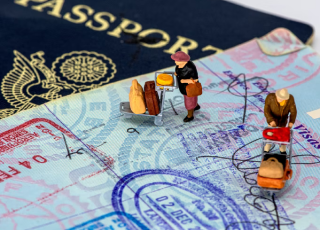
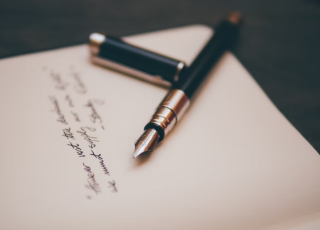
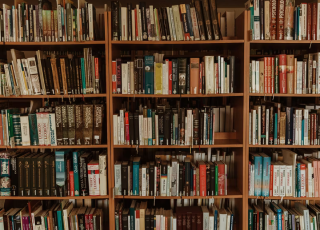
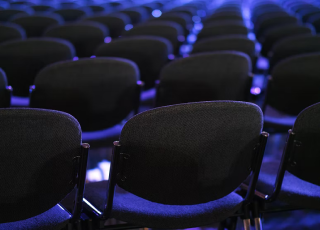
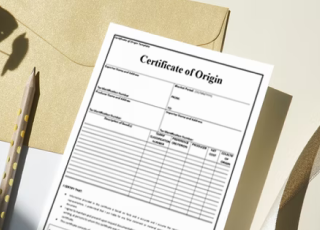
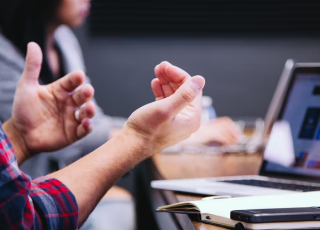
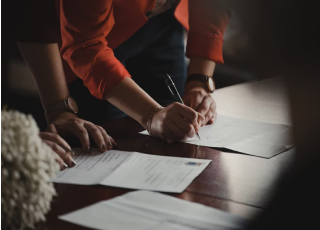
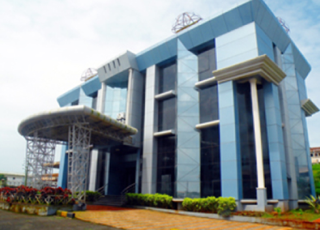

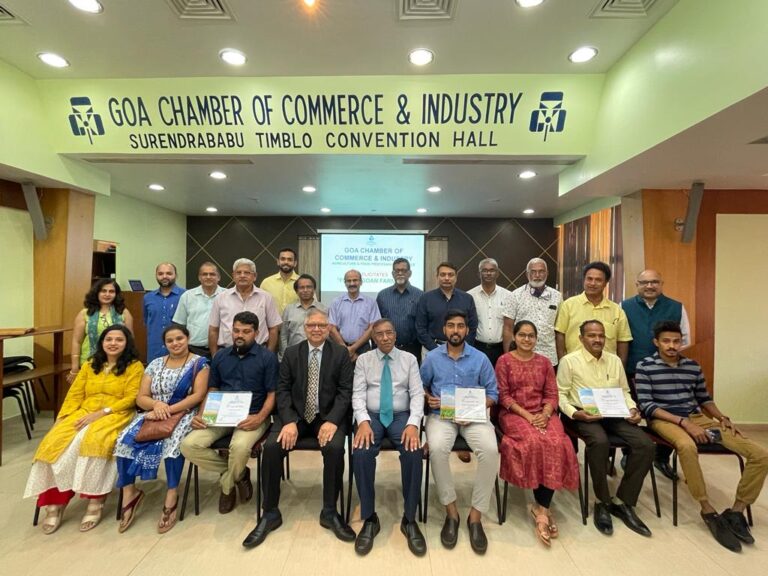
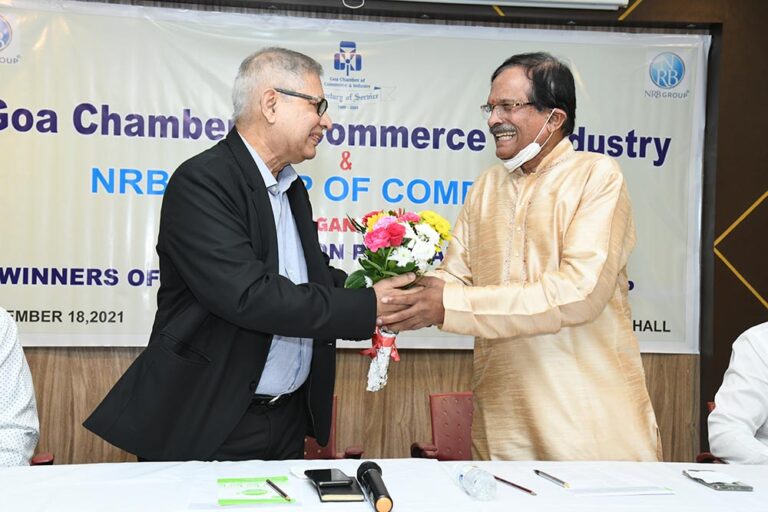
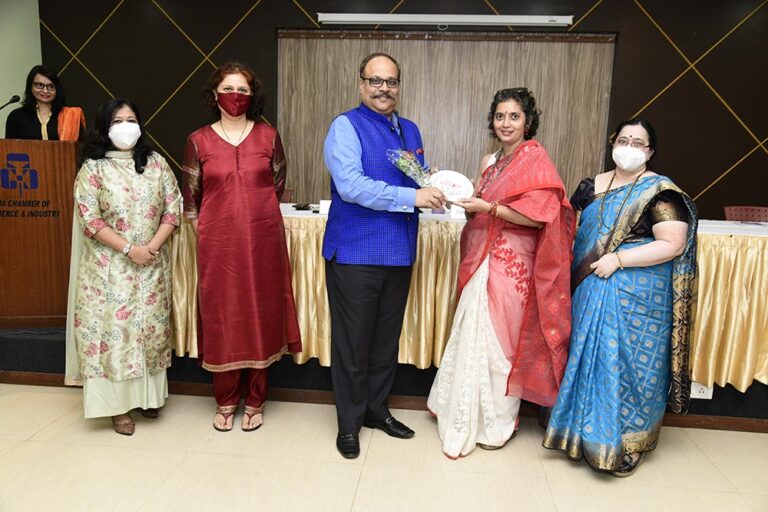

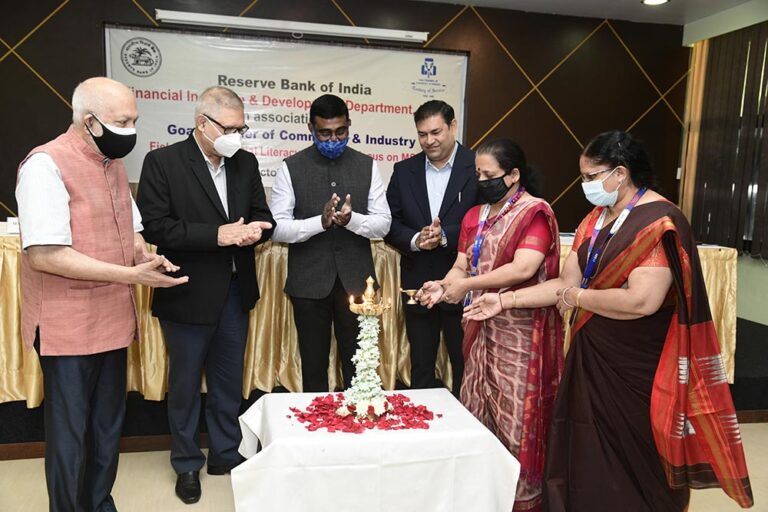
GCCI E-Weekly Newsletter
This section archives weekly activities taken by the chamber and news items collated from various local newspapers of interest to the members of the chamber. Notice all e-weekly archives starting from #51 of 2016 onwards will be found on our Mailchimp archive list.
ABOUT GGCI

Goa Chamber of Commerce & Industry (GCCI) is Goa’s premier non-profit business, support-services and networking organization. We represent and liaise with SME’s, Corporate Organisations and Government bodies.
CONTACT US
GOA CHAMBER OF COMMERCE & INDUSTRY
Narayan Rajaram Bandekar Bhavan, T.B. Cunha Road, Panaji, Goa
